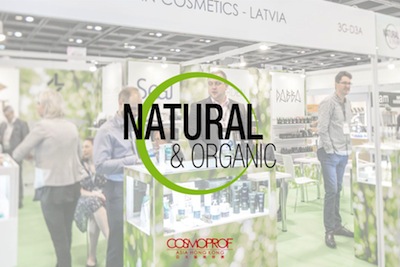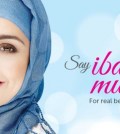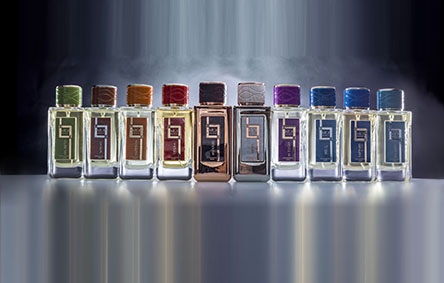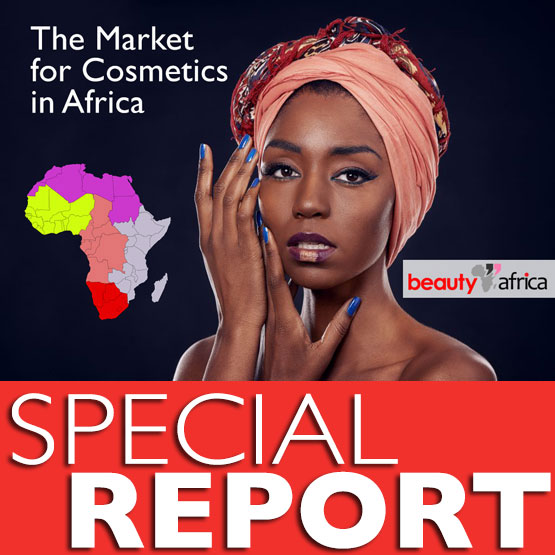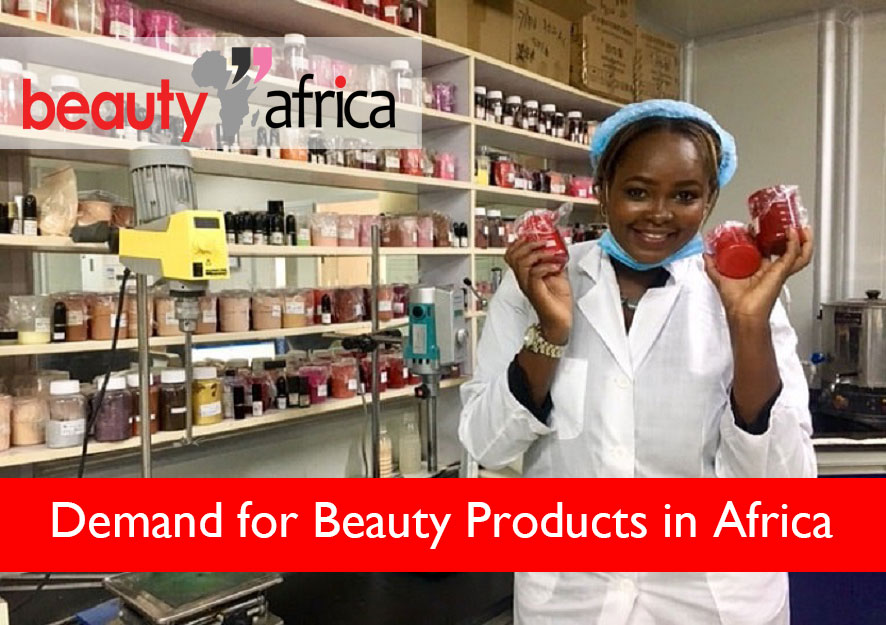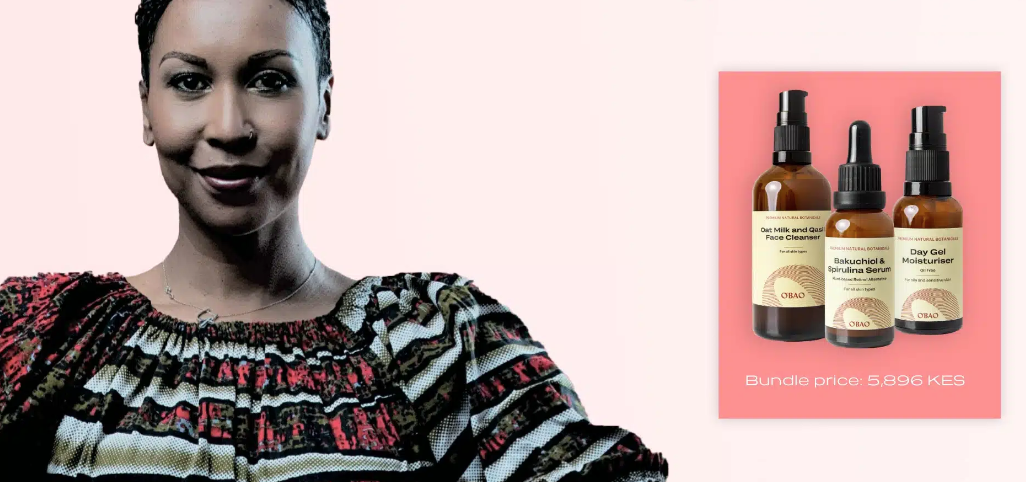Demand for Cosmetics Grows In Africa
The cosmetics sector in Sub-Saharan Africa is expected to grow exponentially over the next few years. Overall, the African beauty and personal care market was estimated at €12 billion in 2022 and it currently increases between 8% and 10% per year against a global market growth rate of close to 4%. It is expected to reach over €20 billion in 2030 when the continent's total population, the fastest growing in the world, will reach 1.5 billion inhabitants.
 The largest market in the Sub-Saharan region, South Africa, represented €5.5 billion in revenue in 2022. The majority of sales in the country are made within structured distribution channels. By comparison, in other countries such as Kenya, only 15% of beauty and personal care products are sold in supermarkets.
The largest market in the Sub-Saharan region, South Africa, represented €5.5 billion in revenue in 2022. The majority of sales in the country are made within structured distribution channels. By comparison, in other countries such as Kenya, only 15% of beauty and personal care products are sold in supermarkets.
In Nigeria, the beauty and personal care market could reach €6 billion by 2030 making Nigeria the sector's rising star in Sub-Saharan Africa.
Products for hair and body care are predominant on the beauty market in Sub-Saharan Africa, where face products and make-up remain marginal but have strong potential.
The Market for Cosmetics in Africa
The beauty market is also divided by a demand for both local and international products. African consumers typically expect high quality products that are both reliable and affordable. Furthermore, consumers often alternate between local brands and international ones depending on local life-styles, customs and purchasing power.
Africa: A Growing Market for Cosmetics
In fact, by 2030 sub-Saharan Africa is expected to have an economy that is worth around $3 trillion, the same value as that of the Russian economy today. East Africa alone is home to over 400 million people, where consumer spending is expected to grow to $220 billion by 2030. Sub-Saharan Africa could be the next big growth region due to its high birth rates and a rising middle class. The market leaders – South Africa and Nigeria – will be followed by five key frontier markets: Kenya, Ethiopia, Tanzania, Ghana and Cameroon.
The population size of Africa is estimated by the United Nations (UN) Population Division at 1.4 billion, where Sub Saharan Africa (SSA) accounts for 81% of Africa’s total population – notable population sizes include Ethiopia, Egypt, Nigeria and the Democratic Republic of the Congo (DRC).
Populations are set to increase by as much as 70% in Uganda and 65% in Tanzania – thereby making these countries a target for major international cosmetics companies and other FMCG multinationals.
However, it is important to consider that population size alone and growth do not have an unambiguous effect on market attractiveness. While on the one hand, a higher population size boosts the number of consumers that a retailer has access to in a country, a lower population implies greater wealth per capita; a crucial factor for luxury good consumption.
Demand for Cosmetics in Africa
Africa’s middle-class has tripled in size in the last 30 years and is driving the continent’s demand for cosmetics. As a result, cosmetics companies are racing for market share. While multinational brands dominate the market in Kenya and Uganda and lack of capacity for local manufacturing remains an issue, local entrepreneurs are outsourcing manufacturing and are using unique sales strategies. The push towards East African markets is also an indirect consequence of South Africa, the continent’s most mature market, seeing local economic difficulties dampen demand for premium products.
 According to recent market research, the beauty industry in the Middle East and Africa was estimated at about $30 billion in 2023. Of this figure, South Africa alone represented over $4.5 billion; Nigeria and Kenya are second and third among sub-Saharan nations, with Kenya’s market totaling more than $500 million.
According to recent market research, the beauty industry in the Middle East and Africa was estimated at about $30 billion in 2023. Of this figure, South Africa alone represented over $4.5 billion; Nigeria and Kenya are second and third among sub-Saharan nations, with Kenya’s market totaling more than $500 million.
In comparison, the Asian market was estimated at $120 billion in the same year.
Cosmetics Market in Africa
More African women, especially in the middle class, now have more spending power. Higher education is allowing many middle class African women to pursue promising careers (like men) in the workplace. As a result, more women on our continent have the extra income that gives them the spending power to ‘invest’ in the latest fashion trends – and a significant chunk of this spending goes to beauty and personal care products.
The outlook for the African cosmetics, beauty and personal care products market is very positive for the coming years. In our usual tradition, let’s explore the fundamental reasons for the huge and growing demand for beauty and personal care products across Africa.
The cosmetics industry (also known as the beauty industry or personal care industry) can be broken down into five major categories as follows:
#1 – Hair care
According to general estimates, up to 20 percent of cosmetic products sold on the market are hair care products. This category includes all products used to make human hair clean and attractive – shampoos, pomade, hair gels, conditioners, coloring and dyes, relaxers and hair styling products. The biggest spenders in this category are beauty salons and barbershops and women who use a wide range of these products.
Recent fashion trends have also increased the amount of spending by men in this category with the growing popularity of dreadlocks, Sporting Waves and ‘afro’ hair styles which require more hair care and attention.
#2 – Skin care
The skin care products category is the largest and most assorted segment of the cosmetic market with several competing formulas, products and brands. The needs of different types of human skin – normal, dry, oily and sensitive skin – is largely responsible for the size and variety of skin care products in the African market, and there are lots of local and international brands releasing new and more attractive products every year!
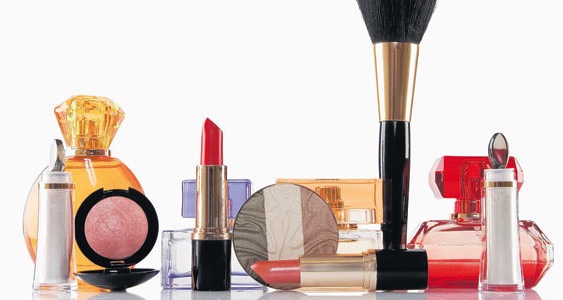 Nearly 35 percent of all cosmetic products sold in this market every year are in the skin care category which includes body lotions, skin moisturizers, cleansers, toners, anti-acne, anti-aging and facial products. The growing trend of using skin lightening or ‘bleaching’ products among young African women and men is also feeding the frenzy of demand that has made the skin care products category a multi-billion dollar business.
Nearly 35 percent of all cosmetic products sold in this market every year are in the skin care category which includes body lotions, skin moisturizers, cleansers, toners, anti-acne, anti-aging and facial products. The growing trend of using skin lightening or ‘bleaching’ products among young African women and men is also feeding the frenzy of demand that has made the skin care products category a multi-billion dollar business.
According to recent reports, Africans are some of the highest users of skin bleaching products: 77 percent of Nigerian women use these products on a regular basis, followed by Togo with 59 percent; South Africa with 35 percent; and Mali at 25 percent.
#3 – Make up
Make up (which is also commonly referred to as ‘colour cosmetics’ or ‘decorative cosmetics’) includes a wide range of products used especially by women on the face, eyes, lips and nails. This category is so segmented that there are very many niches catering to several specific needs. The common products in this category are: lipsticks, concealers, foundation, face powder, blushes, mascara, eyeliners, nail polish and make up removers.
In addition to many international designer brands in the market (such as Mary Kay, Maybelline, Clinique etc), several African-grown and promising makeup brands like Nigeria’s House of Tara and Kenya’s Suzie Beauty line are becoming very successful.
#4 – Personal care and Toiletries
The products in this category are primarily used to clean the body and maintain personal hygiene, and not necessarily for beautification. The products here fall into the Fast Moving Consumer Goods (FMCG) group due to their high demand and how quickly they are consumed.
This category includes bathing soaps (liquids and bars), toothpaste, shaving cream, hair removal preparations (depilatories), deodorants, antiperspirants, sunscreens, toilet paper and several other items used in the bathroom.
#5 – Fragrances
The fragrances category of the cosmetics market may sell the least volumes but surely makes the most profit of all the product categories in this market. ‘Fragrances’ include all mixtures of essential oils and aromatic compounds that give the human body a pleasant scent. Common fragrance classes in the market include – Perfumes, Eau de Toilette, Eau de Parfum, Cologne and aftershave.
Of all the cosmetic groups, the fragrances category is tightly dominated by major designer and celebrity brands. Most of the available versions in our open markets are commonly knockoffs.
African Youngsters Boost Demand for Cosmetics
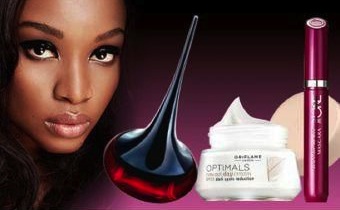 Perhaps an added advantage for sub-Saharan Africa is that 70% of its population is under 30 which means that most of the people are young and provide a ready market for luxury goods which includes cosmetics, toiletries and perfumes.
Perhaps an added advantage for sub-Saharan Africa is that 70% of its population is under 30 which means that most of the people are young and provide a ready market for luxury goods which includes cosmetics, toiletries and perfumes.
The westernisation of African consumer preferences, advances in aggregate economic conditions, and projected reduction in dependency ratios (the proportion of the total number of dependents in the country – i.e. those younger than 15 and those aged 65 and older – to the working-age population) all point towards a future growth engine of luxury goods demand – such as beauty products, cosmetics and perfumes in the overall East African market.
More and more women in East Africa are overcoming the fear of powdering their face and have hence embraced the use of cosmetics for their personal grooming. Men have also followed suit and are frequently seen in beauty parlours for manicure, pedicure and haricuts.
Africa Cosmetics Directory
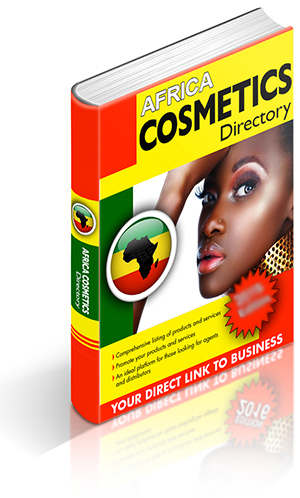 The Africa Cosmetics Directory compiled by Africa Business Pages has emerged as a helpful resource for those looking for buyers of cosmetics, perfumes and beauty products in Africa. The Africa Cosmetics Directory lists major cosmetics importers in over 35 African countries and is available for immediate download in Excel format. This special directory is updated every six months and is currently for sale at the Africa Business Pages B2B portal at a nominal cost of US$444.
The Africa Cosmetics Directory compiled by Africa Business Pages has emerged as a helpful resource for those looking for buyers of cosmetics, perfumes and beauty products in Africa. The Africa Cosmetics Directory lists major cosmetics importers in over 35 African countries and is available for immediate download in Excel format. This special directory is updated every six months and is currently for sale at the Africa Business Pages B2B portal at a nominal cost of US$444.
The Africa Cosmetics Directory has helped many exporters, manufacturers and dealers of cosmetics, perfumes, toiletries and beauty products connect with their business counterparts in the African markets and develop direct business relations and expand their sales and distribution network in key African markets.




